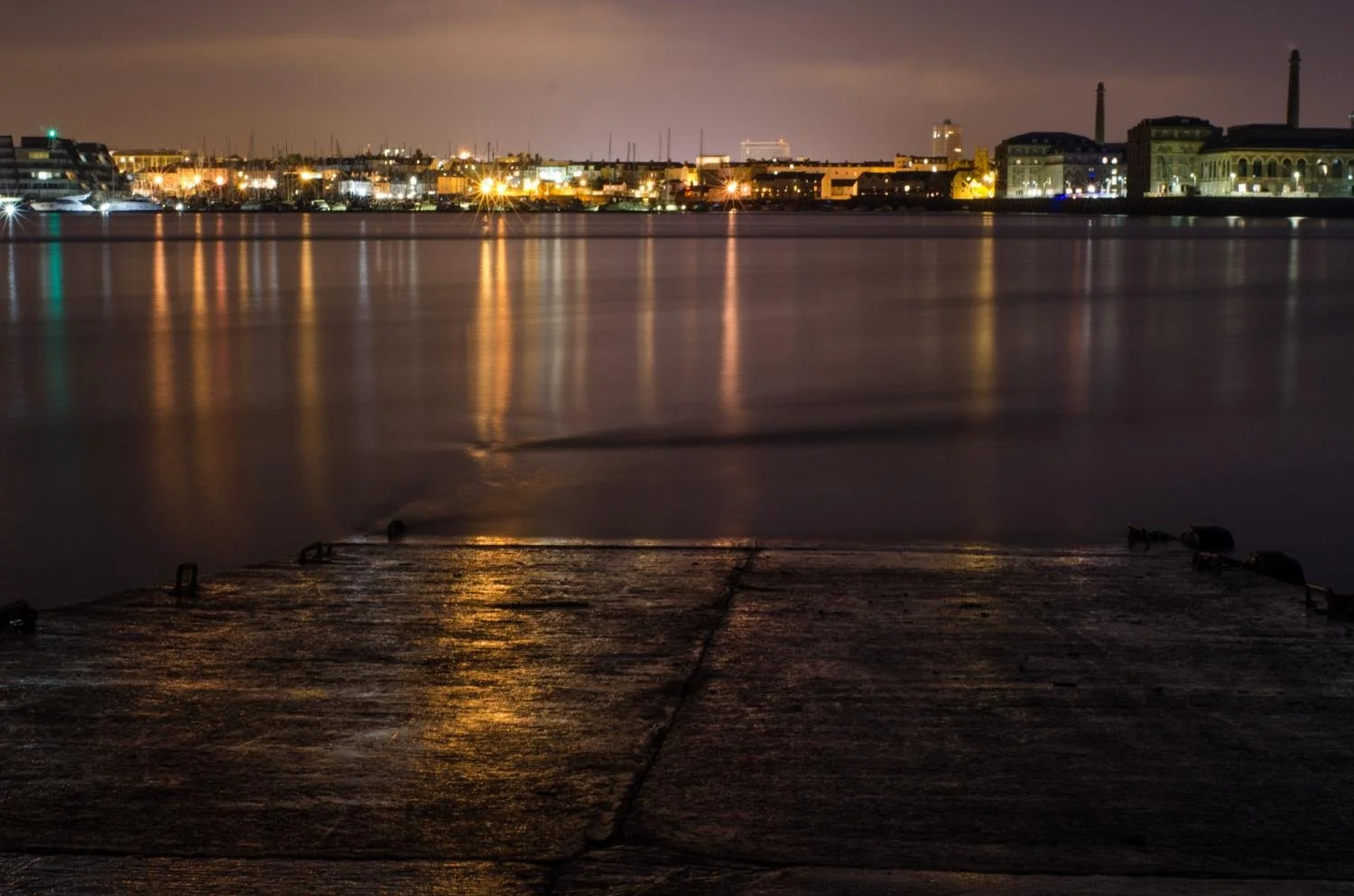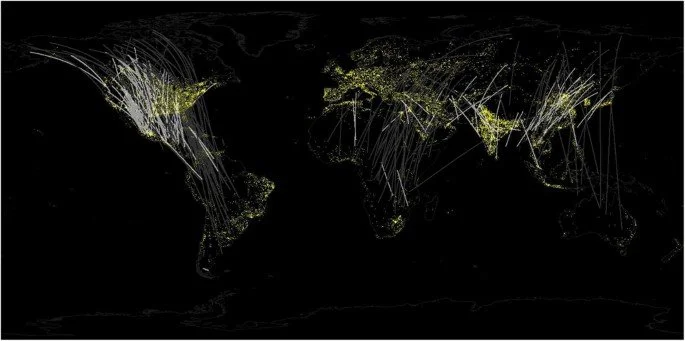Alicia Hayden: Artist & Poet, Graduate of Biological Sciences from Oxford University
Alicia Hayden
Light Pollution in the Deep Sea
More than 80% of the world’s population live under light polluted skies. Light pollution is defined as excessive artificial light, which can have serious harmful consequences for humans and wildlife. The International Dark Sky Association defines four of the main forms of light pollution as:
Glare – excessive brightness that causes visual discomfort
Skyglow – brightening of the night sky over inhabited areas
Light trespass – light falling where it is not intended or needed
Clutter – bright, confusing and excessive groupings of light sources
“Coastal Light Pollution Disturbs Marine Animals” University of Exeter
Over recent years, the amount of light pollution in the skies has increased by approximately 2% per year – although 2% may sound relatively small, over time, it is resulting in a noticeable and detrimental increase.
The effects of artificial light at night, more commonly referred to as ALAN, are well-documented in terrestrial landscapes, particularly for people, mammals, and birds. However, light pollution also affects another less-studied area - the seas.
Currently, ALAN can be detected above 22% of the world’s coasts every night; yet despite this, very little has been done to study the effect of increasing levels of light pollution and ALAN in our oceans, particularly in our deep seas.
The deep sea is defined as an area of the ocean where light levels are low, normally past 200 metres. It is an area largely unexplored by scientists and adventurers, and is home to many unusual and unique species, such as anglerfish (Lophiiformes sp.), vampire squid (Vampyroteuthis infernalis), and the giant oarfish (Regalecus glesne).
Yet despite the mystery of the deep ocean, light pollution is still managing to penetrate into its midnight depths, as light is produced from an increased number of ships, human activity, fishing, oil extraction, coastal development, and urbanisation; all with terrible consequences for the organisms which live there.
Deep sea organisms have increased sensitivity to natural, low light levels, which they rely on for migration, movement, hunting, and courtship. ALAN and light pollution will make it harder for deep sea organisms to detect variation in natural light levels, decreasing their likelihood of successful reproduction. For example, Calanus copepods undergo a daily vertical migration across 50 metres in the Arctic ocean, guided by the variation in moonlight intensity during the Arctic winter. This type of rhythmic vertical migration will be disrupted by ALAN, which will make it harder for copepods, and other migrating organisms, to pick up the light they use to guide their migration – in the case of Calanus copepods, this light source is the moon.
Additionally, broadcast spawners, such as corals, polychaete worms, and echinoderms, synchronise their spawning using lunar light intensity. This means that broadcast spawners will release their eggs and sperm - also known as gametes - using the moon as an external biological clock. If all the broadcast spawners release their gametes when the moon is at its highest light intensity, then the gametes are more likely to be fertilised by another individual. Broadcast spawners are often stationary - or sessile - organisms, so coordinating their reproduction by using a predictable and constant environmental signal, such as moonlight, is essential for their successful reproduction. However, an increase in ALAN will likely cause a lack of synchronisation in their reproduction, as the deep sea organisms are no longer able to easily discern when the moon is shining at its greatest intensity, for example - meaning fewer organisms are able to successfully reproduce, as gametes are no longer released at the same time.
Deep sea organisms are also more sensitive to small changes in light levels, than organisms found nearer the surface. Ludvigsen et al. (2018) discovered that when Arctic zooplankton were exposed to artificial light, they exhibited strong light-avoidance and escape responses up to 100 metres in depth, suggesting that ALAN may be reducing the number of habitats deep sea species are able to live in.
In addition to making deep sea habitats less habitable, light pollution is also affecting the internal workings and biological functioning of organisms. It is well-known that Light pollution and ALAN alter and disrupt the circadian rhythms, or internal body-clocks, of terrestrial organisms. Circadian rhythms help regulate an organisms’ sleep cycle and bodily functions, and they are controlled by the hormone melatonin. Light pollution decreases melatonin production by activating a different signalling pathway, and this results in disrupted circadian rhythms and an altered sleep-wake cycle. Like terrestrial organisms, deep sea organisms also have sensitive circadian rhythms, which are likely to be disrupted by ALAN, potentially detrimentally affecting their survival.
EurekAlert
The effects of ALAN aren’t restricted to tropical countries or oceans either. A recent study at the Plymouth Sound and Tamar Estuary, UK, showed that three-quarters of the seabed are bathed in artificial light from coastal development and urbanisation, disrupting the activity of seabed and pelagic marine organisms. ALAN and light pollution have profound, widespread effects on the deep sea, and the organisms which live there.
https://midnightnature.com/for-years-sea-turtles-have-involuntarily-been-pointing-to-the-effect-of-light-pollution-on-marine-life/
But there is hope; Ludvigsen et al. (2018) showed that despite the zooplankton rapidly leaving areas which were exposed to ALAN, they would quickly return to the area once the artificial lights had been switched off. For zooplankton at least, this suggests that if we decrease ALAN and levels of light pollution near our oceans, we can reverse the damage we are doing to marine life.
Light pollution in the deep sea may be a little illuminated topic (excuse the pun), but preliminary studies are already highlighting the problems ALAN is causing for our marine life. If we focus on minimising light pollution, particularly along our coasts and waterways, we can cut down on ALAN, and protect the sensitive lives of marine organisms.
REFERENCES AND WIDER READING:
Carr S. (2021) Artificial light may be changing marine ecosystems, Available: https://meam.openchannels.org/news/skimmer-marine-ecosystems-and-management/artificial-light-may-be-changing-marine-ecosystems [Accessed: 12/07/2021]
Davies T. W. et al. (2020) “Biologically important artificial light at night on the seafloor”, Nature; Issue 12545, DOI: https://doi.org/10.1038/s41598-020-69461-6
Drake N. (2019) Nights are getting brighter, and Earth is paying the price, Available: https://www.nationalgeographic.co.uk/space/2019/04/nights-are-getting-brighter-and-earth-paying-price [Accessed: 12/07/2021]
Hershberger S. (2020) Light Pollution from Coastal Cities Reaches Seafloor, Available: https://www.scientificamerican.com/article/light-pollution-from-coastal-cities-reaches-seafloor/ [Accessed: 12/07/2021]
International Dark Sky Association (2021) Light Pollution, Available: https://www.darksky.org/light-pollution/ [Accessed: 28/07/2021]
Ludvigsen M. et al. (2018) “Use of an Autonomous Surface Vehicle reveals small-scale diel vertical migrations of zooplankton and susceptibility to light pollution under low solar irradiance”, Science Advances; Volume 4, Issue 1





